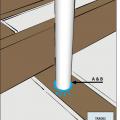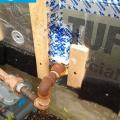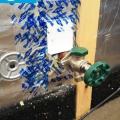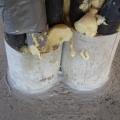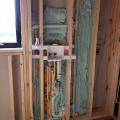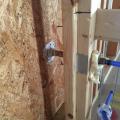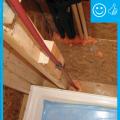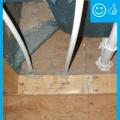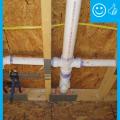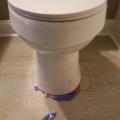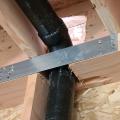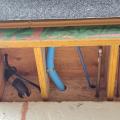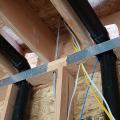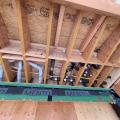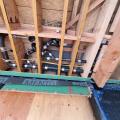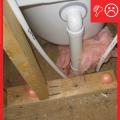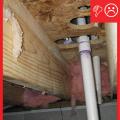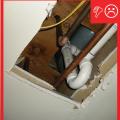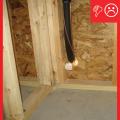Showing results 1 - 25 of 25
Air-seal around all plumbing and piping installed through walls, ceilings, and flooring adjacent to unconditioned space to prevent air leakage.
Plumbing penetrations through the below slab insulation are sealed with tape and spray foam.
Plumbing pipes that pass through top plates can be air-sealed with a gasket material cut slightly smaller than the pipe diameter.
Right - The pipe penetration is properly flashed and furring strips are installed on each side in preparation for installing cladding
Right - The water and air control layers are properly integrated around the hose bib
Right – Spray foam is used to carefully seal behind plumbing that was installed in an exterior wall.
Right – Tape and spray foam are used to air seal around pipes that extend through exterior walls.
Spray foam insulation insulates and air seals around plumbing pipes and top plates in the attic.
Wrong - Hole in rim joist was cut too large for plumbing pipe and the gaps are not air sealed.
Wrong - Holes in rim joists were cut too large for plumbing pipes and gaps should be air sealed.
Wrong - Plumbing penetrations are not sealed in sub-floor and it is not recommended to run plumbing in a cantilevered floor.
Wrong - Tub or shower floor is not insulated and air-sealed with a solid barrier material between the floor joists and the tub. Plumbing pipes shouldn't be located in a cantilever.
Wrong - Wall cavities behind shower are not completely filled with insulation and are lacking the solid interior air barrier.
Wrong – Fibrous insulation is not an air barrier and cannot be used for sealing holes.
Wrong – These holes have been cut larger than needed, making them difficult to seal.
Wrong – These plumbing penetrations have been cut larger than needed, making them difficult to seal.
